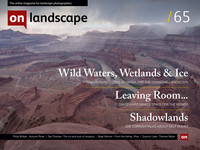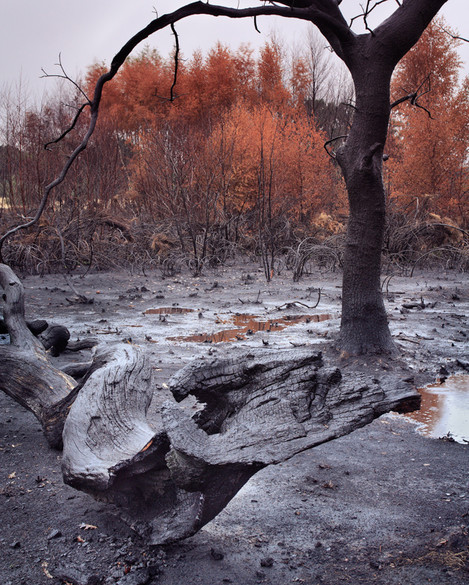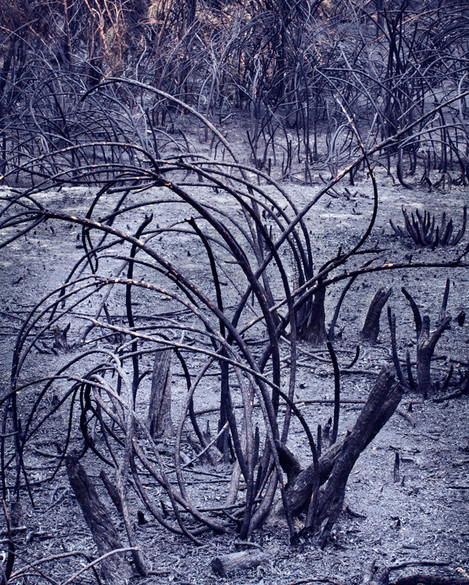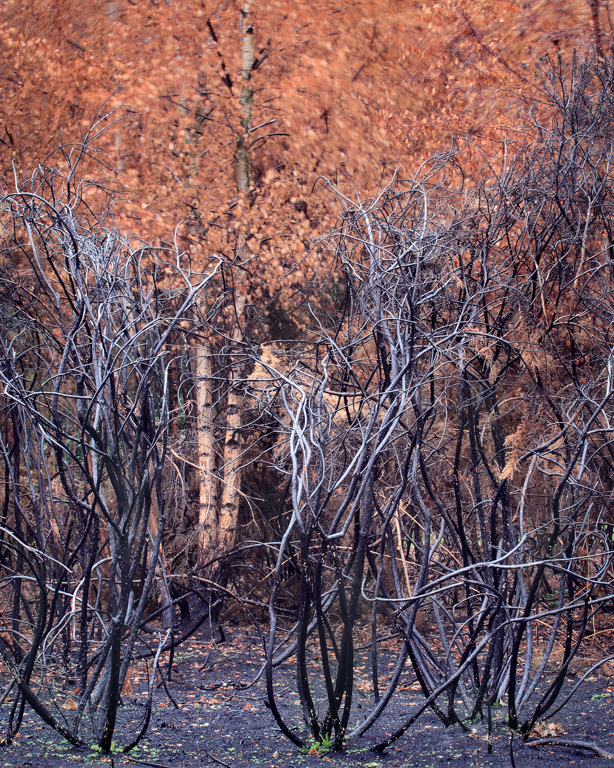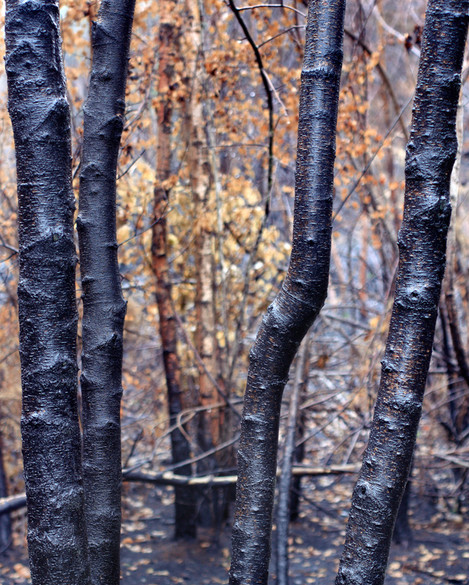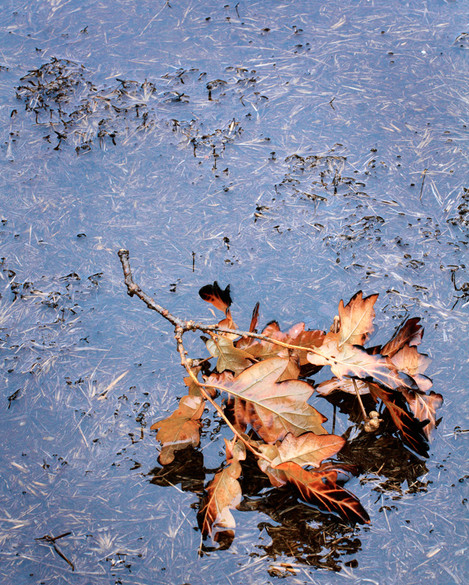A Tale of Destruction and Beauty
I’ve been making photographs in Epping Forest regularly for almost three years. It was my intention to bring the project to a close in July. My visits are generally much less frequent during the summer as it’s all far too green and I have been looking forward to beginning a new project. My plans were deferred however after a fire broke out at the southern end of the forest. Probably caused either by a carelessly discarded cigarette or disposable barbecue, the blaze required over 100 firefighters to contain it.
Many people would consider such a destructive event as being very negative, but for the landscape photographer it opens up a world of opportunity.
Despite the car park being a few hundred metres away, the smell of smoke was noticeable as soon as I stepped out of the car. The flora most affected seemed to be the gorse. This introduced a problem as the burnt branches had all hunched over at knee level. It was very difficult to compose any near-far images, and I wanted to avoid making a set of similar detail pictures. Fortunately, at least for me, in one area the fire had reached a copse of birch trees. Using the simple lines of the vertical trunks I could tame some of the unbroken rat’s nest before me. The flames had only partially scorched the trees, leaving most of their colour unchanged. I used this to bring some much-needed contrast to the otherwise blue/grey pictures.
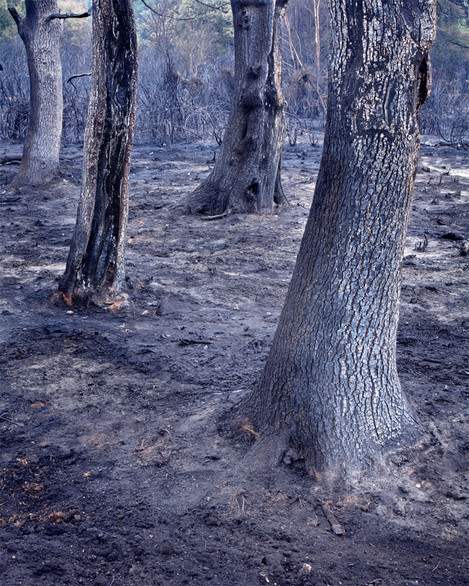
The interwoven tendrils proved difficult to navigate a path through. In places firefighters had forced a path through the extinguished undergrowth. The dusky residue stripped from some of the scrawny limbs, revealing fibrous streaks of orange and yellow.
Aware my pictures so far had all been intimate, I wandered over to a small group of beeches that stood proud of any clutter. The earth here was still damp and felt much cooler to stand on. The surrounding grass had been thoroughly annihilated. The fire brigade arrived shortly after to survey the area, carefully navigating their truck through the undergrowth. I made one final image of a quartet of trees before calling it a day.
A month later I returned for another early morning session. As with my first visit the sky was oppressively dark, but this time did not provide the same blue hue to my pictures that I liked so much. It soon began to rain hard. In fact it had been raining heavily for the last two days, which suited me as I knew I would have the place to myself.
The relentless rain was a struggle to work with. I used an umbrella/sunshade from a child’s buggy clipped onto my tripod to shelter my camera. It meant I could work more freely, wiping moisture from the lens with one hand and operating the cable release with the other. Nevertheless, it was very frustrating, especially when making multiple exposures for focus stacking.
I eventually gave up standing out in the open and headed into a more sheltered area. I noticed a cluster of birch trees, their once silver coated trunks now glistening iridescent blue and jet-black. A shallow depth of field helped simplify the background and emphasise the texture of the bark.
Back amongst the gorse, which at a glance seemed done for, there were already signs of new life. Incredibly some of these hardy plants had received only superficial damage. Green shoots were dotted around the ashen ground. Most were no taller than a few centimetres and only providing a minimal splash of colour. As I walked back to the car I began to speculate how the area could look after snowfall. The charcoal black will look fantastic against a white background. Roll on winter.
You can see more of Nigel's work at his website nigelmorton.com or his Flickr stream. We have also interviewed Nigel before as featured photographer.

